What is Jamboree on the air (JOTA)
When Scouts want to meet young people from another country, they usually think of attending a World Jamboree. But few people realize that each year more than a million Scouts and Guides "get together" over the airwaves for the annual Jamboree-on-the-Air (JOTA). During the 2014 event, worldwide Scouting participation included 1.1 million Scouts and 200,000 Guides, for a total participation of over 1.3 million--the largest Scouting event in the world.
Modern technology offers Scouts the exciting opportunity to make friends in other countries without leaving home. JOTA is an annual event in which Scouts and Guides from all over the world speak to each other by means of Amateur (ham) Radio. Scouting experiences are exchanged and ideas are shared via radio waves. Since 1958 when the first Jamboree-on-the-Air was held, millions of Scouts and Guides have met each other through this event. Many contacts made during JOTA have resulted in pen pals and links between Scout troops and Guides units that have lasted many years. With no restrictions on age or on the number of participants, and at little or no expense, JOTA allows Scouts and Guides to contact each other by ham radio. The radio stations are operated by licensed amateur radio operators. Many Scouts, leaders and Guides hold licenses and have their own stations, but the majority participate in JOTA through stations operated by local radio clubs and individual radio amateurs. Some operators use television or computer-linked communications and even space communications to allow Scouts and Guides to talk with each other .
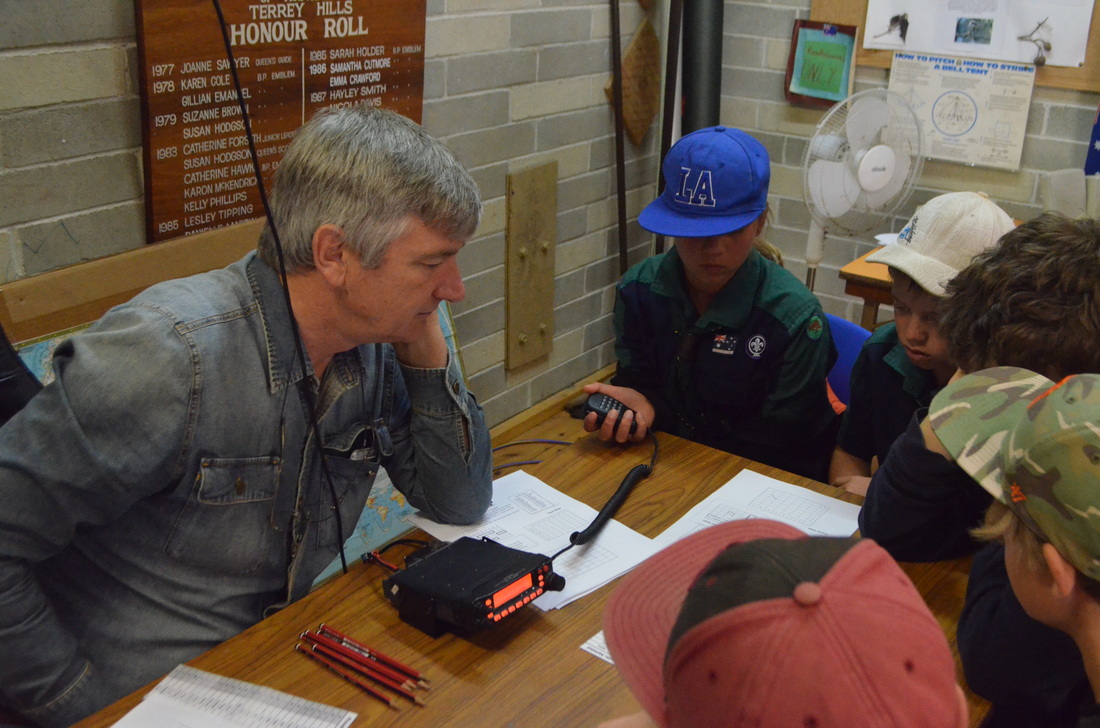
Les Mitchell - The founder of JOTA (A Tribute)
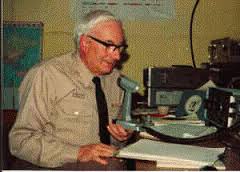
Little did i think when I drew up the plans and rules for the first event in 1958 that its popularity would increase and spread around the world. Even more astonishing is the fact that after all this time it still holds it's popularity and now has a participation of some half a million Scouts and Guides in over one hundred countries involving some ten thousand amateur radio stations. In fact it has become the largest international Scout event ever
Have I been aware of any significant changes in the event since it started ? Possibly the most noticeable change to me has been that in 1958 so few members of the Scout Movement were qualified radio amateurs that we had to call on the help of local amateur radio clubs to organise and run stations taking part in JOTA. Over the years Scouts taking part in the event have become radio amateurs themselves and a significant so interested in the hobby that they have become radio amateurs themselves and a significant numbers of JOTA operators today are members of the Movement. This makes participation in the event far more interesting for those at both ends of a contact
There are two. Other significant changes which have vastly improved the event. One is the change form Amplitude Modulation (AM) to Single Side Band (SSB). This has led to more efficient signals enabling one to make contacts further afield using only the often simple temporary aerial arrays erected during JOTA
The second improvement is the miniaturisation of the equipment in 1958 a single station consisted of several large sized and heavy pieces of equipment mostly home-constructed which would fill a car boot and took a long time to install. Today one can carry a complete station in a small suitcase and assemble a station within a few minutes it is only the aerial which still needs the same amount of installation time as it did in the past!
Finally, JOTA is great fun but there is one simple point you must remember - even the most efficient communication system in the world is useless if you have nothing to say. If you put nothing into the event you may get nothing out of it! JOTA is your chance to speak to Scouts and Guides over the horizon.....Silence makes no friends!
Good Radio Scouting contacts
Les Mitchell, G3BHK
October 2000
Les Mitchell sadly passed away on 6 October 2014. This article is obtained from the WOSM for sharing)
About: Amateur Radio
What is it?
For those involved it is fun, a way to learn and make new friends, a technical communications hobby or recreational activity that provides a true sense of personal achievement. While we commonly hear about Facebook, YouTube and Twitter, long before they came along amateur radio was the world’s first social media network and it continues to provide that role today. While many talk on amateur radio, across town or around the world, radio amateurs also communicate in other interesting ways. There is also a serious side to it with radio amateurs providing emergency communications. When disaster strikes the telephone, mobile phone and internet connection often fail or are overloaded. This aspect of amateur radio, that gives support to rescue, relief and recovery efforts and saves lives, was seen following earthquakes and tsunamis in recent years including those in China, Indonesia, Italy, Japan, Haiti and Chile. The New York World Trade Centre terrorist attack on 11 September 2001, Hurricane Katrina 2005 and other major disasters have involved radio amateurs providing their skills and support. In Australia emergency communications were provided in response to the Black Saturday bushfire disaster 2009. That followed a tradition which began in the 1920’s during tropical cyclones in Queensland, the Black Friday bushfires in Victoria 1939, and includes the New South Wales floods in 1955, Tropical Cyclone Tracy 1974, Ash Wednesday disaster 1983, Newcastle Earthquake 1989 and on numerous other occasions. Around the world regular training occurs so radio amateurs can be prepared to use their skills when required.
Who are these radio amateurs?
There are 16000+ radio amateurs in Australia and over two million in nearly every country in the world. They come from all walks of life – students, retirees, all kinds of professional people, truck drivers, tradespeople, hospitality staff, entertainers and others engaged in creative occupations. They are part of the world wide amateur radio community that has people of all ages with a common interest in radio communication, a start-up knowledge of today radio technologies, regulations and operating protocols.
Why a licence?
For more than a century those engaged in amateur radio have needed to demonstrate their knowledge in basic technical matters and the rules of the airwaves or regulations. They obtain an internationally recognised certificate, then a licence and their own personal radio callsign to operate. Because radio does not stop at international borders it is subject to an international treaty to which Australia is a signatory. An amateur radio licence is like an international passport, except rather than personally travelling to other countries you do so via the airwaves. The radio amateur makes friends in other countries, has an opportunity to learn more about their culture, and contribute to international goodwill.
What's the attraction of amateur radio?
Some are attracted by the ability to generate a radio signal and communicate across town, around the world, and even with astronauts on the International Space Station. Others bounce signals off the moon or communicate via satellites. Some like to build their own equipment, accessories and antennas or experiment with leading edge technical developments, connecting a computer with a radio to communicate via a keyboard, or send and receive images and amateur television signals. For young interested in any kind of technical or science career there is no better personal activity than amateur radio to give them hands-on experience and stimulate their minds. It has led many to technical careers, including leaders in their fields who have obtained the Nobel Prize and credit their early interest in amateur radio as a contributing factor to their success. The amateur radio community in the 21st century includes those experimenting with the latest electronics and advanced technologies. These include wireless digital communications, software defined radios (SDR), long-distance digital and image transmissions. While others enjoy keeping the original communication system, Morse code, on the airwaves and are just as skilled as the earlier wireless telegraphers who began it all in the late 1890s. The hobby of Amateur Radio has a long and proud tradition. The very first radio amateurs were true pioneers of radio technology. Amateurs 'invented' and refined much of the early radio technology and were the first to transmit music, radio plays, and information to the handful of people who had the new fangled radio receivers. After World War II the hobby of amateur radio flourished. Radio clubs sprang up in schools all over the world and kids went home each night to build some new contraption, or have a chat with someone over the wireless. These young people became the mainstay of the technical professions and developed much of the modern technology we use today
Ways we can communicate at JOTA
Index
HF
VHF
UHF
Amateur TV or ATV
Echolink
Internet Radio Linking Project (IRLP)
Amateur Space services
Automatic Packet Reporting System APRS
Packet Radio
Broadband-Hamnet™
Summits On The Air (SOTA)
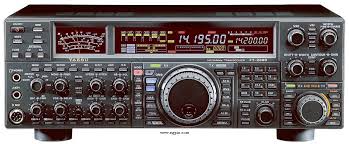 HF Radio
HF Radio
High frequency (HF) is the designation for the range of radio frequency electromagnetic waves (radio waves) between 3 and 30 MHz. The HF band is a major part of the shortwave band of frequencies, so communication at these frequencies is often called shortwave radio. Because radio waves in this band can be reflected back to Earth by the ionosphere layer in the atmosphere – a method known as "skip" or "skywave" propagation – these frequencies are suitable for long-distance communication across intercontinental distances. The band is used by international shortwave broadcasting stations (2.310 - 25.820 MHz), aviation communication, government time stations, weather stations, Amateur radio and citizens band services, among other uses. Almost all Amateur radio operators are able to use HF at JOTA's HF can be Digital signals as well as analogue and was one of the first ever systems used for JOTA it still remains a big part of JOTA today. Advances in technology over the years have changed HF radio making it now able to offer Morse code, amplitude modulation, side band, and digital abilities
Top
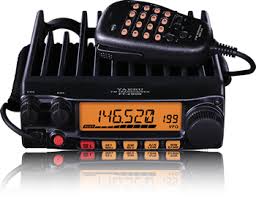 VHF Radio
VHF Radio
Very high frequency (VHF) a the range of radio frequency electromagnetic waves (radio waves) from 30 MHz to 300 MHz, Common uses for VHF are FM radio broadcasting, television broadcasting, two way land mobile radio systems (emergency, business, private use and military), long range communication up to several tens of kilometres with radio modems, amateur radio, and marine communications, Air traffic control communications and air navigation systems. Almost all Amateur radio operators will be able to use VHF at JOTA, in major urban centres Amateurs have set up vast networks of repeaters allowing large VHF coverage allowing many JOTA sites to talk to each other with good quality audio, digital voice and Data. Text based chat systems are also possible using special VHF Radios, Even some space communications are able to be conducted on VHF Radios
Top
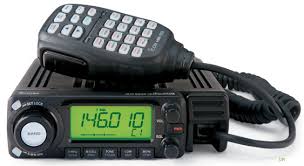 UHF Radio
UHF Radio
Ultra high frequency (UHF) are the range of radio frequencies between 300 MHz and 3 GHz, UHF radio waves propagate mainly by line of sight; they are blocked by hills and large buildings although the transmission through building walls is high enough for indoor reception. They are used for television broadcasting, cell phones, satellite communication including GPS, personal radio services including Wi-Fi and Bluetooth, walkie-talkies, cordless phones, amateur radio and numerous other applications. Almost all Amateur radio operators will be able to use UHF at JOTA and may even be able to transmit pictures, data/internet and GPS over UHF, If you are vey lucky you may even hear the international space station or other signals from space using UHF
Top
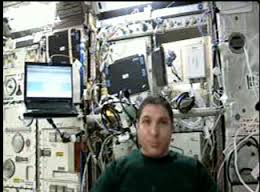 Amateur TV or ATV
Amateur TV or ATV
. Some Amateur radio operators have the ability to send TV pictures over the air wave on UHF amateur frequency’s, make shore you ask your local radio club if they have anyone who has the equipment or the skills for ATV before planning to use ATV at your JOTA if you do find someone it could make for a very interesting JOTA as you can run your own TV station on amateur radio frequency, you could try slow scan TV or the old analogue TV, all the way up to modern digital TV
See www.hamtv.com for more information
Top
 Echolink
Echolink
Safe, fast, easy, clear, fun, your JOTA ticket to International Scouting. This is an alternate method used by Amateur radio operators to communicate around the world and can be used for taking part in JOTA. It is an amateur radio system that works over the Internet, linked to radios and other computers throughout the world. It is generally perfect two way voice communication with the contact of your choice in the country of your choice. You need a standard computer microphone, soundcard and speakers, a reliable internet connection either wired or wireless. The software is able to be downloaded from www.echolink.org after the requested amateur radio operator callsign has been validated by the Echolink administrators. Validation normally takes about 48 hours to confirm the licence details. under supervision you can talk around the world to other JOTA sites.
To make it easy for other JOTA stations to contact you using ECHOLINK, insert the word JOTA followed by your location as your Location/Description. The radio operator will assist with the changes to the Echolink configuration to allow this to be displayed on the Echolink Station Users list.
See www.echolink.org for more information
Top
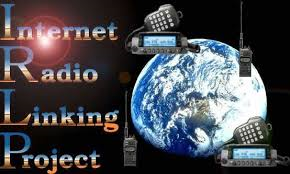 Internet Radio Linking Project (IRLP)
Internet Radio Linking Project (IRLP)
The Internet Radio Linking Project, also called IRLP, is a closed-source project that links amateur radio stations around the world by using Voice over IP (VoIP). Each gateway consists of a dedicated computer running custom software that is connected to both a radio and the Internet. This arrangement forms what is known as an IRLP Node. Amateur radio (or ham) operators within radio range of a local node are able to use tone generators to control a node-to-node connection with any other available node in the world. Each node has a unique 4 digit node number in the range of 1000-8999. A real-time searchable list of all nodes worldwide (including their current status) is available anytime by viewing the IRLP Network at a Glance. As of June 2009, there are over 3,180 nodes across 7 continents. IRLP connections are of two types: node to node, and node to reflector. Stations wishing to communicate with 3 or more nodes at the same time may accomplish this by connecting to what is called an IRLP Reflector. Reflectors are a type of conferencing system. Most reflectors on the network have 10 channels (0-9) with channel 0 being the main channel. Each reflector has a unique 4 digit node number in the range of 9000-9999. The first 3 digits consist of the reflector number, while the fourth digit represents the channel number.
NSW JOTA-JOTI Runs a IRLP node number 6111 click hear for more detales
You can load a special file into your google earth to see the locations of all the nodes in the world and see who is connected to who. click hear to download the kml file
See IRLP information page for more
Top
 Amateur Space services
Amateur Space services
Amateur radio users have access to space infrastructure and can transmit voice, data and video via orbiting satellites. It is also possible via a lot of planning to talk to the international space station via amateur radio. Most Amateur radio operators do not specialise in Space communications if you wish to use this service have a talk to your local radio club and ask if there is any member who has skills in space communications.
See sites.google.com/site/amsataustralia for more information on amateur satellites
See http://www.arrl.org/amateur-radio-on-the-international-space-station for information on the international space station via amateur radio
Top
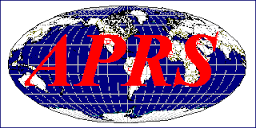 Automatic Packet Reporting System (APRS)
Automatic Packet Reporting System (APRS)
Is an amateur radio based digital communications system on VHF for local, tactical, real-time exchange of information among all members of a net, including map based displays for situational awareness. APRS is used to transmit real-time information including messages, bulletins, announcements and the locations of any station or object via packet radio protocols. Real-time reporting of station position for mobiles is facilitated using the Global Positioning System (GPS). APRS is capable of transmitting a wide variety of data including weather reports, short text messages, radio direction finding bearings, telemetry data, and storm forecasts. These reports can be combined with a computer and mapping software to show the transmitted data superimposed on a variety of map displays and special radios. With various implementations and additions APRS has expanded to a world wide network, though it's fundamental objective still remain the same.
The Automatic Position Reporting System, APRS, allows mobile users and objects to report their current position over radio. This enables the objects position to be automatically displayed and updated on computers or special radios running APRS mapping applications. APRS can have many uses
APRS can use Devices called Digipeters which resend the digital data. The Digipeters can be portable or fixed. Igates can also be used to convert the data going over the air into Internet data that can be seen on web pages and a like
Click hear for more about APRS
You can load a special file into your google earth to see the locations of all the units that are on in the world click hear to download the kml file
NSW JOTA-JOTI is currently looking at building a Digipeter and Igate for scouts to use, find out more at our APRS Page
Top
 Radio Fox hunting or RDF
Radio Fox hunting or RDF
Fox Hunting or Radio Direction Finding (RDF), where you try and track down a transmitter operating from a hidden location. fox-hunts are often foot based events, the objective so to find the "fox transmitter" the fastest.
See http://vkradio.com/ardf.html for more information
pageTop
 Packet Radio
Packet Radio
Packet radio is a particular digital mode of Amateur Radio ("Ham" Radio) communications which corresponds to computer telecommunications. The telephone modem is replaced by a "magic" box called a terminal node controller (TNC); the telephone is replaced by an amateur radio transceiver, and the phone system is replaced by the "free" amateur radio waves. Packet radio takes any data stream sent from a computer and sends that via radio to another amateur radio station similarly equipped. Packet radio is so named because it sends the data in small bursts, or packets.
See http://vkfaq.ampr.org/specpack.php for more information
Top
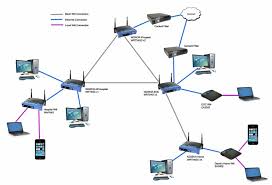 Broadband-Hamnet™
Broadband-Hamnet™
Broadband-Hamnet™ is a Amateur radio network using a special firmware that transforms consumer wireless gear to a specialized ham radio function. It can use application software to transport your data from place to place using a mesh network of devices it is like a private internet service for amateurs only, emails can be sent pictures and so on, the system is able to be quickly set up and can cope with the failure of some parts of the mesh by redirecting traffic around the affected area.
NSW JOTA-JOTI is currently testing Broadband-Hamnet. see our Broadband-Hamnet page for more information
See Broadband-Hamnet page for more information
Top
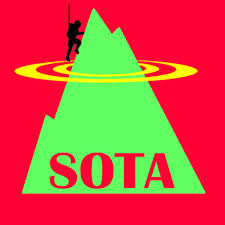 Summits On The Air (SOTA)
Summits On The Air (SOTA)
The SOTA programme is an amateur radio awards programme, not a contest. It is about making radio contacts from selected mountain summits, or making contacts with operators on those summits. It was first launched in the UK in about 2002.
It is possible for JOTA and SOTA can be combined a hike can also be added.
See vkfaq.ampr.org/opersota.php
Top
And Lots More. Have a look for your self